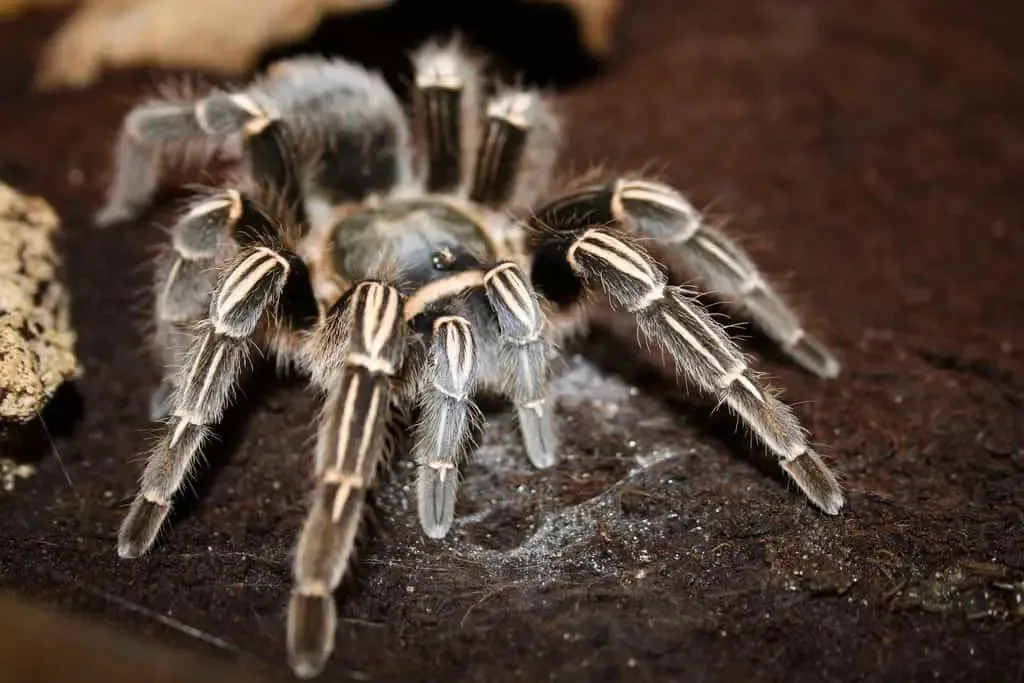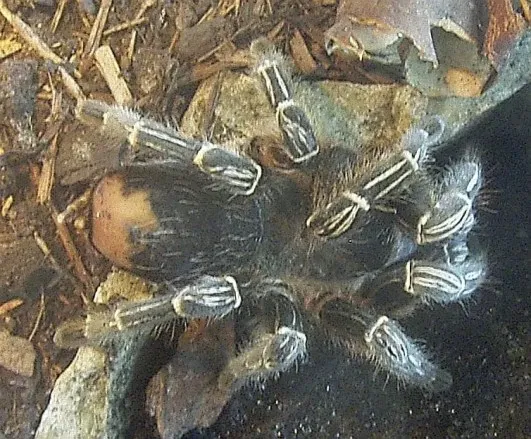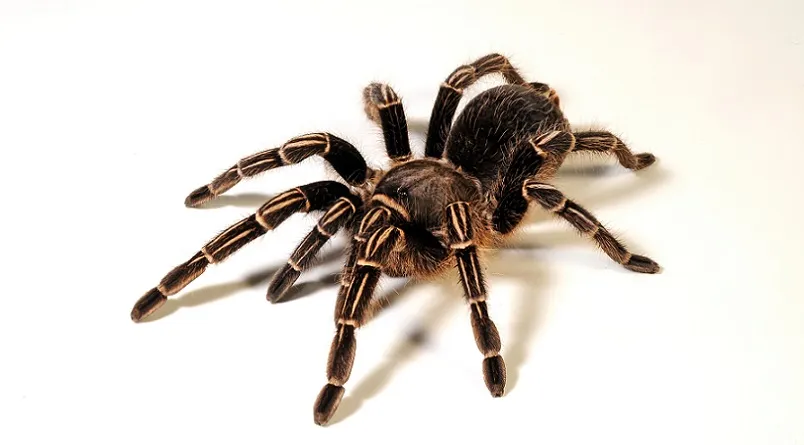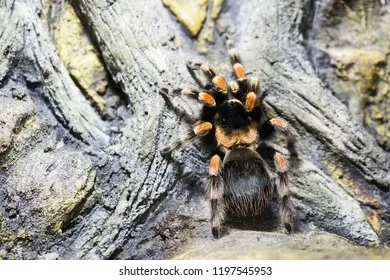5 Amazing Facts About the Costa Rican Zebra Tarantula
The Costa Rican Zebra Tarantula (Aphonopelma seemanni) is a fascinating creature, popular among tarantula enthusiasts. These spiders are known for their striking appearance, relatively docile nature, and ease of care, making them an excellent choice for both beginner and experienced pet owners. Their unique zebra-like markings and interesting behaviors contribute to their appeal, providing a captivating glimpse into the world of arachnids. This article explores five amazing facts about the Costa Rican Zebra Tarantula, offering insights into their characteristics, habitat, and care requirements. Discover why this species has become a favorite in the pet trade and learn what makes them so special. Whether you’re considering getting one as a pet or simply curious about these creatures, this guide will provide you with valuable information.
Appearance and Characteristics
The Costa Rican Zebra Tarantula is easily recognizable due to its distinct appearance. They are covered in black and white stripes, similar to a zebra, which gives them their common name. Their bodies are robust, and their legs are covered in dense hairs, which help them sense their environment. These tarantulas have a relatively calm demeanor, especially compared to some other tarantula species, making them less likely to bite unless provoked. The combination of their striking looks and gentle temperament makes them a desirable pet for those interested in exotic animals. They present a unique opportunity to observe the fascinating behaviors of tarantulas in a relatively safe and manageable way.
Size and Lifespan

Costa Rican Zebra Tarantulas are medium-sized tarantulas. Females tend to be larger than males, often reaching a leg span of up to 5-6 inches. Males are generally smaller and have a shorter lifespan. The lifespan of a female Costa Rican Zebra Tarantula can be impressive, often living for 10 to 15 years or even longer with proper care. Males, on the other hand, typically live for 2 to 5 years after reaching maturity. This longevity makes them a long-term commitment for pet owners. Their growth rate is dependent on factors such as feeding and environmental conditions, with molting being a significant part of their development.
Coloration and Markings
The most striking feature of the Costa Rican Zebra Tarantula is its coloration. The carapace and legs are marked with alternating black and white stripes, creating a zebra-like pattern. This pattern is unique to each individual, which aids in identification. The abdomen is typically a darker shade, often black or dark brown, and covered in hairs. The colors can vary slightly depending on the individual tarantula and its age, but the distinctive stripes remain a defining characteristic. This striking appearance makes them visually appealing and a favorite among tarantula keepers. The markings serve a purpose, providing camouflage in their natural habitat and helping them blend into their environment.
Habitat and Native Range
These tarantulas are native to the tropical dry forests of Costa Rica and parts of Central America. Their natural habitat is characterized by warm temperatures and moderate humidity. They are terrestrial spiders, meaning they spend most of their time on the ground, often creating burrows or finding shelter under rocks and fallen logs. Understanding their natural environment is crucial for providing appropriate care in captivity. Replicating their natural habitat helps ensure their health and well-being. These tarantulas have adapted to survive in these environments, and their behavior and preferences are shaped by the conditions of their native range.
Where They Come From

Costa Rican Zebra Tarantulas originate from the tropical dry forests of Costa Rica and surrounding regions. They are commonly found in areas with sandy or loamy soil, where they can easily burrow. These regions provide the right climate and environmental conditions for their survival. The specific locations within these habitats vary, but they are generally found in areas with ample cover and protection from predators. Their distribution reflects their adaptability to the specific climate and terrain of their native land. Their geographic origin is a significant aspect of their identity and influences their care needs in captivity.
Preferred Environment
In their natural habitat, Costa Rican Zebra Tarantulas prefer warm temperatures, typically between 75°F and 85°F (24°C to 29°C), and moderate humidity levels. They thrive in environments with ample shelter, such as burrows or hiding places under rocks and logs. The substrate should be a mix of soil, sand, and possibly some organic material to allow them to burrow and maintain appropriate humidity. They also require access to fresh water. Mimicking these conditions in captivity is vital for their health and well-being. Providing appropriate heating, humidity, and a suitable substrate is essential for creating a comfortable and safe environment for your pet.
Behavior and Temperament
Costa Rican Zebra Tarantulas are known for their relatively docile temperament, making them a good choice for beginner tarantula keepers. While they may exhibit defensive behaviors if threatened, such as flicking urticating hairs, they are generally not aggressive. They are primarily nocturnal, meaning they are most active at night. Their behavior includes burrowing, resting, and occasionally hunting. Understanding their behavior is essential for providing the right care and interaction. Observing their habits helps create a more enriching environment. Their gentle nature, combined with their fascinating behaviors, makes them popular among hobbyists.
Defensive Mechanisms

When threatened, Costa Rican Zebra Tarantulas have several defense mechanisms. One common defense is the flicking of urticating hairs from their abdomen. These hairs can cause irritation and itchiness if they come into contact with skin or eyes. They may also attempt to flee or, as a last resort, bite. However, bites are rare, and their venom is not considered medically significant to humans. The primary defensive strategy is to avoid confrontation. Providing a secure and stress-free environment helps minimize defensive behaviors. Awareness of these mechanisms is important for safe handling and interaction.
Interaction with Humans
Costa Rican Zebra Tarantulas can be handled, but it is generally recommended to do so with caution. They are not prone to biting, but any tarantula can bite if it feels threatened or is startled. Handling should be kept to a minimum to avoid stressing the spider. When handling, it is advisable to do so close to the ground or a soft surface in case the spider falls. Regular observation and care should focus on providing a suitable habitat and feeding schedule. Respecting their needs and understanding their behavior contributes to a positive and safe experience for both the owner and the pet. Proper handling techniques and a calm approach will help minimize potential risks.
Diet and Feeding Habits
In the wild, Costa Rican Zebra Tarantulas are opportunistic predators, feeding primarily on insects, but can also consume other invertebrates and even small vertebrates. Their diet consists of whatever prey is available in their habitat. In captivity, they are easily fed with a variety of insects. Understanding their natural diet is crucial for providing the correct nutrition and maintaining their health. The availability of different prey species impacts their growth and well-being. They are well-adapted hunters, using their webs and stealth to capture their meals.
What They Eat in the Wild

In their natural environment, Costa Rican Zebra Tarantulas feed on a variety of insects such as crickets, beetles, and moths. They also may consume other invertebrates like centipedes and even small vertebrates if the opportunity arises. Their diet is mainly dependent on the availability of prey in their specific habitat. They are active hunters and ambush predators, waiting for unsuspecting prey to come within striking distance. The wide variety of insects and small animals in their environment provides them with a balanced and varied diet.
Feeding in Captivity
In captivity, Costa Rican Zebra Tarantulas are typically fed a diet of insects, such as crickets, mealworms, and roaches. The size of the prey should be appropriate for the size of the tarantula; it should not be larger than the tarantula’s body. It’s important to provide a varied diet and not overfeed them. Feeding frequency depends on the tarantula’s age and size, with younger tarantulas requiring more frequent feeding. Always ensure that any uneaten prey is removed from the enclosure to prevent stress and potential harm to the tarantula. Fresh water should always be available. Observing their feeding habits helps in adjusting their diet as necessary.
Conservation Status and Threats
The Costa Rican Zebra Tarantula is not currently listed as endangered or threatened, but it is essential to be aware of potential threats to their wild populations. These tarantulas face the same issues as other animals, with habitat loss being the primary concern. Loss of habitat results from deforestation, urbanization, and agricultural expansion. Conservation efforts focus on protecting their natural environment. Awareness about their conservation status is vital to protecting them. Responsible pet ownership contributes to conservation efforts by reducing the demand for wild-caught specimens.
Current Population Trends

The population trends for Costa Rican Zebra Tarantulas are generally stable. However, the species’ long-term survival depends on the preservation of their habitat. Wild populations are vulnerable to habitat destruction and changes in land use. Monitoring their numbers and understanding their population dynamics helps manage and protect them. The pet trade, when conducted responsibly, can contribute to conservation by reducing demand for wild-caught specimens and supporting captive breeding programs. Current estimates suggest a healthy population, but it’s crucial to remain vigilant about conservation efforts.
Threats to Their Survival
The main threats to the Costa Rican Zebra Tarantula’s survival include habitat loss due to deforestation, agricultural expansion, and urbanization. Other threats include the illegal pet trade, which can deplete wild populations. Climate change can also pose a threat by altering their habitat and weather patterns. Invasive species and pesticide use in agricultural areas can affect their food supply. Conservation efforts focus on habitat preservation, education, and responsible pet ownership. Reducing the human impact on their natural environments is essential for the survival of this species.
